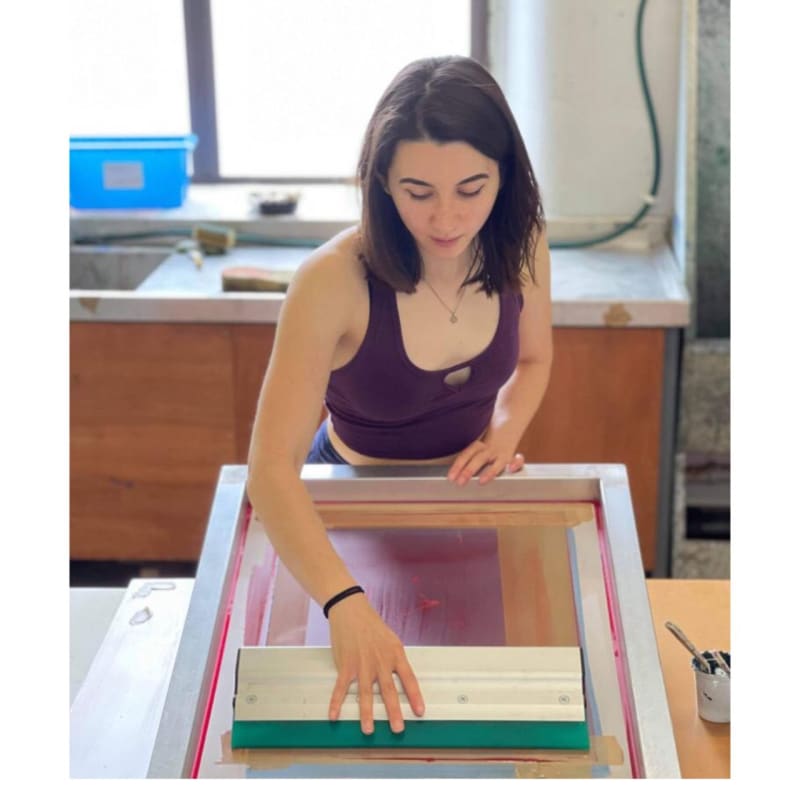Chloe Barnes, Gallery Associate for Hidden Bristol, is a skilled printmaker and studies MA Multi-Disciplinary Printmaking at the University West of England. Chloe has kindly given us an insight into the world of printing and the efforts that go into producing a print.
The Practice of Printmaking
Behind every original print is an artist, a master printer or team who work together to bring an image to life. These works were created for the medium. Even the term printmaking is a broad name to generalise the plethora of technical processes artists could use to create an edition of work.
Different printmaking categories include intaglio, relief, planography, and stencil. At Hidden Gallery, you will most likely come across lithographs, screenprints and etchings, yet, we have also showcased an array of giclee prints, linocuts, original photographsetc.
Like many artists, I was drawn to printmaking to incorporate multiple skills and interests (drawing, painting, collage etc.) into a single outcome. Comparable to its inclusive disposition, the medium is collaborative by nature, whether that is in the studio sharing equipment with independent artists or together as a team to produce an edition. Since specialist knowledge of inks, chemicals, image translation, registration etc., is required, it is not uncommon for artists to work closely with master printmakers – specialists in the medium who are artists in their own right. Picasso and Fernand Mourlot (master printmaker at Atelier Mourlot Freres Studio) are fantastic examples of collaborators who experimented and pushed the boundaries of painting, drawing and print through 350+ lithographs. The print studio enables the exchange of information and ideas to thrive, which allows this medium to continue to evolve today.
Although studio collaboration has its benefits, many printmakers have to own or seek access to a print studio. The specialist equipment is expensive, takes up a lot of room, and often weighs a ton – for example, many etching presses require a truck and a small crane to transport. As a result, when you compare it to painting or drawing, print is not the most accessible or the simplest of mediums to produce work. Despite this, the potential of creating multiples enables artists to sell and distribute art to a larger audience, making this effort worthwhile.
In my practice, I make figurative monotypes (one-off prints) by painting onto an aluminium plate or a silkscreen. Unable to make an edition from this process, the unique works are more comparable to a painting. Yet, contrasting to the latter, the time restraint tied to monoprinting encourages me to work intuitively and expressively. Notably, Edgar Degas has explored this way of working through dark-field monotypes of ballet dancers. And most recently, Tracey Emin’s ‘A Journey to Death’ exhibition showcases evocative silkscreen monoprints.
At Hidden, you are sure to find exceptional examples of printmaking. From Matisse’s vibrant Verve lithographs to Banksy’s iconic screenprints, the prints in our portfolio champion high quality, well-executed and complex processes brought to life by renowned artists from the last two centuries. Even though I supply my knowledge of the medium to the gallery, everyone at Hidden can elaborate on the artworks in our collection.If you ever find yourself near a Hidden Gallery in Bristol, Bath, Brighton, or London, feel free to pop in to discuss your favourite prints.
Any questions? We are happy to help. Call: 0117 279 6402 or send us a message now.
Written by Chloe Barnes (Gallery Associate at Hidden Bristol)

